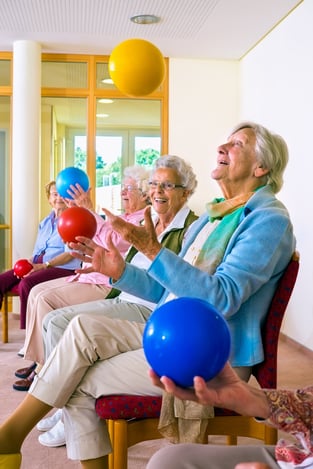As we age, we get this notion that we no longer need to exercise, or as the common adage says, “I’m too old.” To put it bluntly, you are never too old to exercise or be active. No matter your condition, one of the best things you can do is to get up and move. Years of research has shown that exercising has tremendous health benefits, no matter what your age is! Exercising has shown to improve balance and coordination, prevent bone loss, increase strength, improve cognitive function, and decrease chronic illnesses such as diabetes. With this in mind, here are few senior wellness myths that older adults believe when it comes to exercising.
What is the point of exercising when decline in old age is inescapable?
Aging does not mean decline; it means another chapter in life with new challenges to overcome. There are numerous stories of older adults becoming marathon runners like Ed Whitlock, who ran marathons well into his 80s. While running a marathon may not be your goal, it does show you that age does not matter. The delusion is that aging means weakness and/or fatigue, but in reality it’s a sign of inactivity. More importantly, exercising and staying active can help you maintain your independence and your lifestyle.
At my age, is exercise really safe for me?
Yes, exercise is safe for you. Again it’s one of the best things you can do for yourself. Moreover, studies have shown that individuals who exercise on a regular basis are less likely to fall. In part this is because exercising improves strength, flexibility, and coordination. Two of the better exercises that target flexibility and coordination are tai chi and yoga. Additionally, exercising frequently will increase bone density and decrease the likelihood of osteoporosis.
I have a chronic disease, so I shouldn’t exercise.
Many older adults suffer from arthritis, diabetes, heart disease, and many other chronic conditions. And because of it, older adults believe that they can no longer exercise. In fact, the opposite is true. Exercising and being physically active is the best thing to do. For example, if you have arthritis, exercising will help improve your range of motion and decrease the pain caused by arthritis, which will lead to increased energy levels and improved sleep. Additionally, if you happen to have arthritis, here are a few tips to get started before exercising:
- Apply heat: This will help the blood flow and relax the muscles around the affected area.
- Move gently: Move slowly to warm up the joints. You may want to do this between 5 and 10 minutes before moving on to strength and aerobic activities.
- Ice: After performing your exercises, apply ice as needed to help prevent joint swelling.
***
If you are just starting out with senior fitness, make sure not to overdo it. It’s alright to start off slowly and to work your way up in intensity, especially if you have not been exercising for a few years or decades. The goal is to get moving and to create a habit that becomes a lifestyle. Also expect to experience soreness after beginning a program. However if you experience pain, you may have exercised too hard and will want to tone it down.
See how we keep our residents coming back to the fitness center with our unique programing. Click below for ideas to improve your programs.



 Group exercise classes are one of the top activities in senior living communities nowadays. With the increasing number of activities provided on community calendars, having a good group exercise program
Group exercise classes are one of the top activities in senior living communities nowadays. With the increasing number of activities provided on community calendars, having a good group exercise program 
 One of the biggest reasons people give as to why they aren’t eating healthy is the cost of foods,
One of the biggest reasons people give as to why they aren’t eating healthy is the cost of foods, 